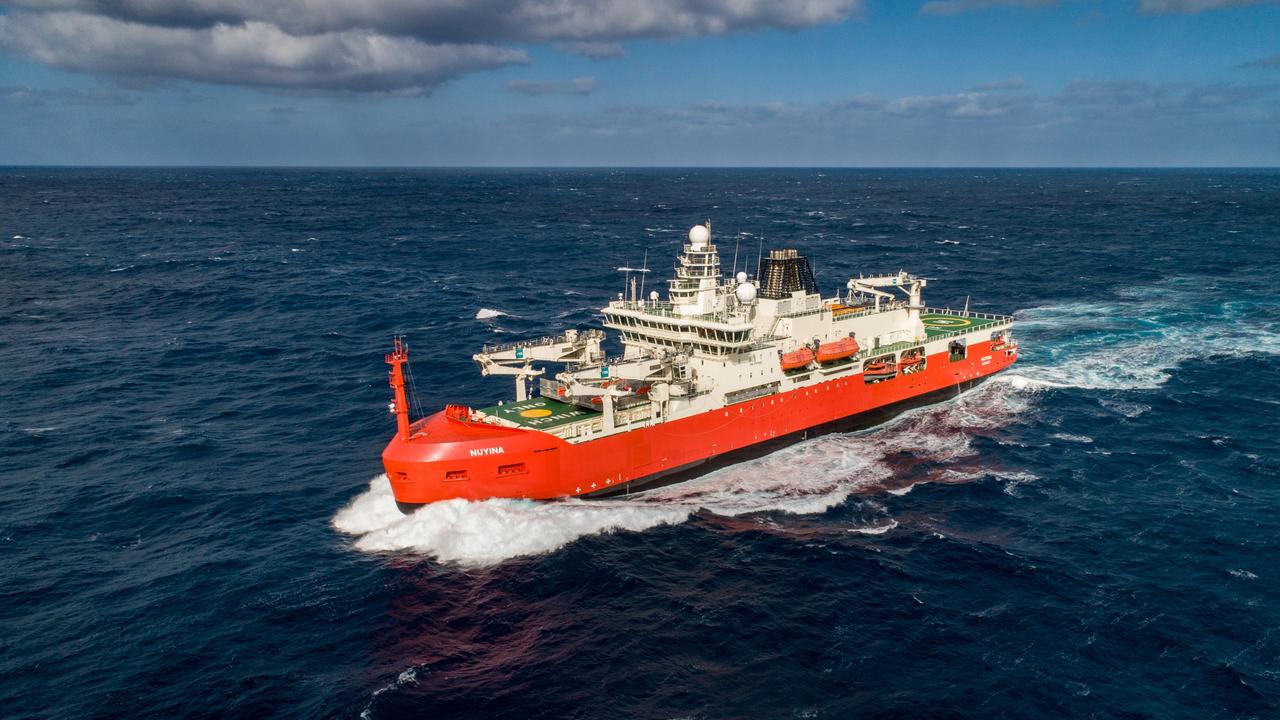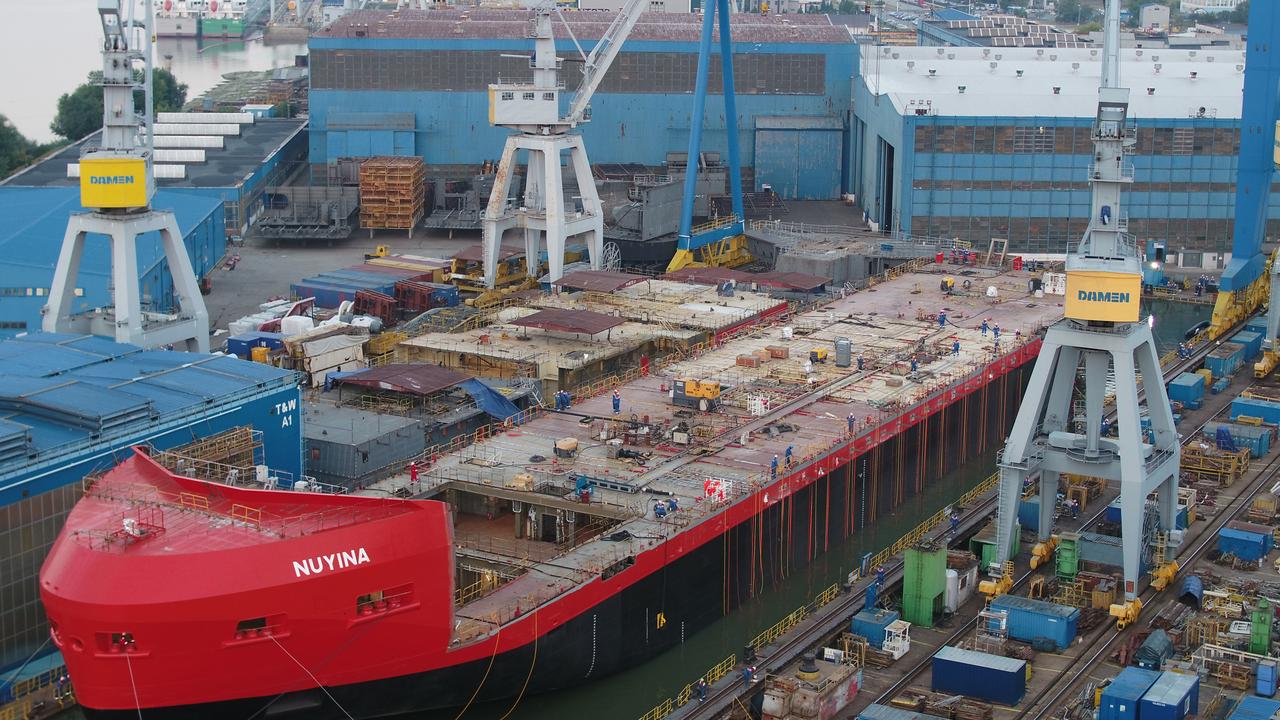Tasmania will soon welcome new icebreaker RSV Nuyina to its home port of Hobart
A journey more than a decade in the making will culminate in Australia’s new Antarctic icebreaker arriving in Hobart next week. Everything you need to know about the new ship >>>
WHEN Australia’s new icebreaker finally arrives at its home port of Hobart next weekend after a 24,000km journey from Europe, it will mark a historic moment in the country’s proud history of Antarctic research.
The grand entrance of the RSV Nuyina in Tasmania’s capital on Saturday (OCT 16) will be the culmination of more than a decade’s worth of tireless efforts to get to this point.
Nuyina — pronounced noy-yee-nah — means ‘southern lights’ in palawa kani, the language of Tasmanian Aborigines, following a nationwide competition among schools to find a name for the striking red vessel.
At 160 metres long, the imposing icebreaker will be a focal point on the Hobart waterfront for decades to come and dramatically increase the country’s Antarctic research capability.
In comparison, the vessel the Nuyina is replacing — the now-retired iconic orange icebreaker Aurora Australis — measured 94.3m in length.
The new vessel, the main lifeline to Australia’s Antarctic research stations, has the capacity to carry 32 crew and 117 expeditioners on board for trips lasting up to three months.
It is expected to be in operation for up to 200 days per year, with between four to six voyages to Antarctica annually.

The Australian Antarctic Division’s general manager of assets and infrastructure, Rob Bryson, admits to being overwhelmed and somewhat emotional by the project finally coming to fruition, saying he had been there “since day 1” when he was shipping manager in 2009.
“Words fail me,’’ he told the Mercury.
“The first time it will be home will be next Saturday and that’s going to be a breathtaking kind of thing.
“I was there when we first cut steel on the vessel ... and then just being involved in all of the different milestones along the way ... is something I’ll never forget.
“There’s not many people that get to be involved in a really significant project like this and it’s taken quite a lot of energy and time and effort for a lot of different people involved in it.”

Talks to replace the Aurora Australis first started in 2009, but it was not until 2016 that a contract was signed.
The original design of the Nuyina was done in Denmark, before being refined in the Netherlands and finally built in Romania.
Building started in 2017 before sea trials commenced during 2020, with Covid somewhat slowing plans down.
In August last year the Nuyina was towed from Romania to the Netherlands, where the final fit out was done and the testing and trials process began.
The Nuyina was put through its paces for a final time during further sea trials in June this year and it set sail on a mammoth voyage to its home port on August 31.
The keel of the Nuyina bears coins from Australia, Denmark, Netherlands and Romania to pay homage to the countries involved in the creation of the long-anticipated vessel, which cost $528m to design and build.

The Australian government is investing $2bn over the life cycle of the vessel, which is expected to be 30 years.
The Nuyina will soon be home, and the enormity of the occasion is not lost on Mr Bryson.
“It’s a significant moment in Hobart’s journey as a gateway city, to have the greatest concentration of Antarctic and Southern Ocean scientists in the Southern Hemisphere to get access to one of the most advanced scientific polar research vessels on the planet,’’ he said.
“It’s a dramatic escalation in our capability to research Antarctic science we haven’t had before.”
For Hobartians, it will be a significant feature on the Hobart portscape, and Mr Bryson believes the Nuyina will become an icon in its own right, just like the Aurora Australis was.
“People will be blown away by the sheer size and scale of the vessel,’’ he said.




